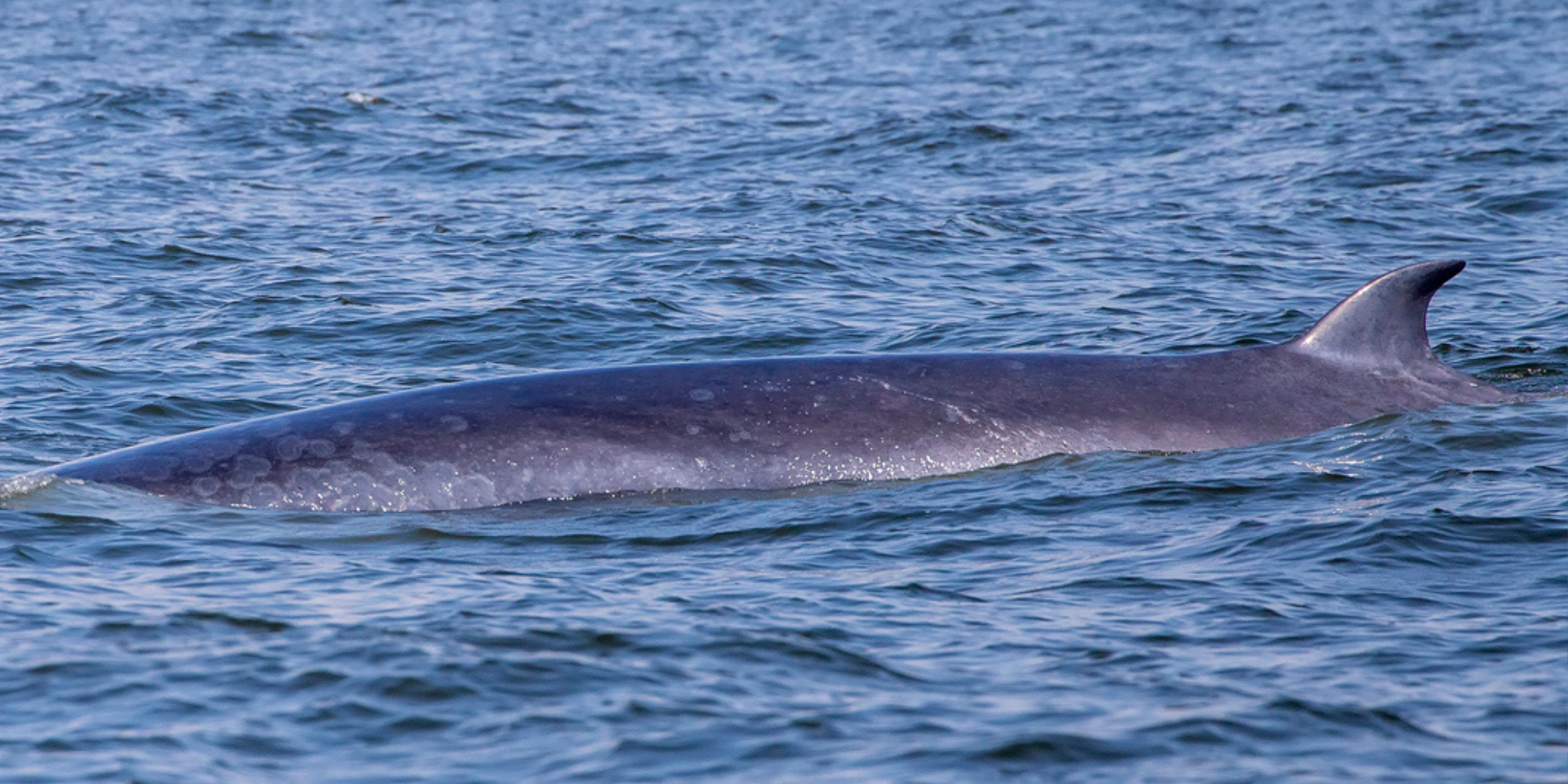Bryde’s whales, which belong to the baleen whale family, are found in warm temperate, subtropical and tropical waters.
They’re considered one of the ‘great whales’ or rorquals, a group that also includes blue whales and humpback whales.
Bryde’s whales are named after Johan Bryde, a Norwegian who built the first whaling stations in South Africa in the early part of the 20th century.
The species looks very similar to sei whales but are smaller and also prefer warmer waters. They’re slender in appearance and their colouration is dark blue-grey with white bellies. Their heads make up about one quarter of their entire body length.
With three prominent ridges on the front of their blowhole, Brydes’ whales have slender and pointed flippers, a strongly hooked dorsal fin and a broad fluke (tail).
Like other baleen whales, Bryde’s whales have grooved pleats on each side of their mouths that sieve water from the food that they ingest.
You’ll most often spot the species alone or in pairs. More rarely, they are spotted in groups of up to 20 feeding together.
Weighing in at up to 20 tonnes, Bryde’s whales spend most of their day within 15 metres of the water’s surface and they usually swim at around 1.5 to 6 kilometres an hour, though they can increase speed to 20 kilometres per hour.
They’re well known for being able to change directions unexpectedly when swimming. Another distinctive behaviour is how they blow water up to three metres in the air.
The Bryde’s whale spends most of its time in the open ocean, away from the coast. They can dive to great depths to catch their favourite prey.
Where do Bryde’s whales live?
The species prefers waters of 16°c or more so they’re only found in tropical, subtropical and warm temperate waters. They are the only species of baleen whale that lives in these warmer waters. They’re spotted mostly between latitudes 40°N and 40°S.
Some Bryde’s whales are year-round inhabitants in their locations whilst others migrate seasonally from shallower coastal waters to deeper offshore waters.
In the Pacific Ocean, the species is found around Japan, Australia and New Zealand and in the Indian Ocean, the whales also found in Australia along with South Africa and southeast Asia.
They are also spotted in the Atlantic Ocean, from the Gulf of Mexico right across to West Africa (they’re a species that is often spotted in the Canaries), and they’re found off the coast of South America.
If you recall a news story from a few years ago about a man being caught up in the jaws of a whale and subsequently spat back out, it happened in South Africa and involved a Bryde’s whale. Find out more in this news article from The Guardian.

Population
Bryde’s whales are an understudied species and more research is needed on their migration patterns and population.
Due to the fact that Bryde’s whales and sei whales have (and still continue) to get confused for each other, it has made it difficult to estimate population numbers.
Bryde’s whales were not heavily targeted during the peak period of commercial whaling, mostly because their location was outside of common whaling grounds and also because they were smaller and had less blubber than other whale species. It’s thought, therefore, that their population numbers were not impacted to any significant degree by whaling.
On the IUCN Red List of Threatened Species, the Bryde’s whale is classified as of ‘Least Concern’.
What do they eat?
Bryde’s whales mostly eat schooling fish, which includes sardines, anchovies, mackerels and herring. They have also been documented eating krill, plankton, red crabs and shrimp.
They’re active lunge feeders, pushing through the water with an open mouth and throat pleats extended.
Only two species of whales have been observed using bubble nets to catch prey – humpback whales and Bryde’s whales.
Threats to Bryde’s whales
Vessel strikes
Bryde’s whales are at risk of vessel strikes throughout their range but the threat is much higher in areas with busy ship traffic.
They are the third most commonly reported species struck by vessels in the southern hemisphere.
Environmental change and pollution
Climate change and pollution are a threat to all whales and dolphins because of the loss of habitat as waters become warmer.
Plastics and micro plastics, along with chemical pollutants, entering into the water system are a serious threat to all creatures in our ocean.
Bryde’s whales, like other cetaceans, use noise to communicate and to locate prey. Increased noise pollution from vessels and other human activity interferes with this ability.
Entanglement in fishing gear
Like other cetaceans, Bryde’s whales can become entangled in fishing gear which goes on to cause injury, fatigue, comprised feeding and sometimes even death.
Hunting
In recent years, Bryde’s whales have been hunted off the coasts of Indonesia and the Philippines. A number of Bryde’s whale catches are carried out by Japan, which does so under the guise of its ‘scientific whale research programme’. See more in this IFAW article.
